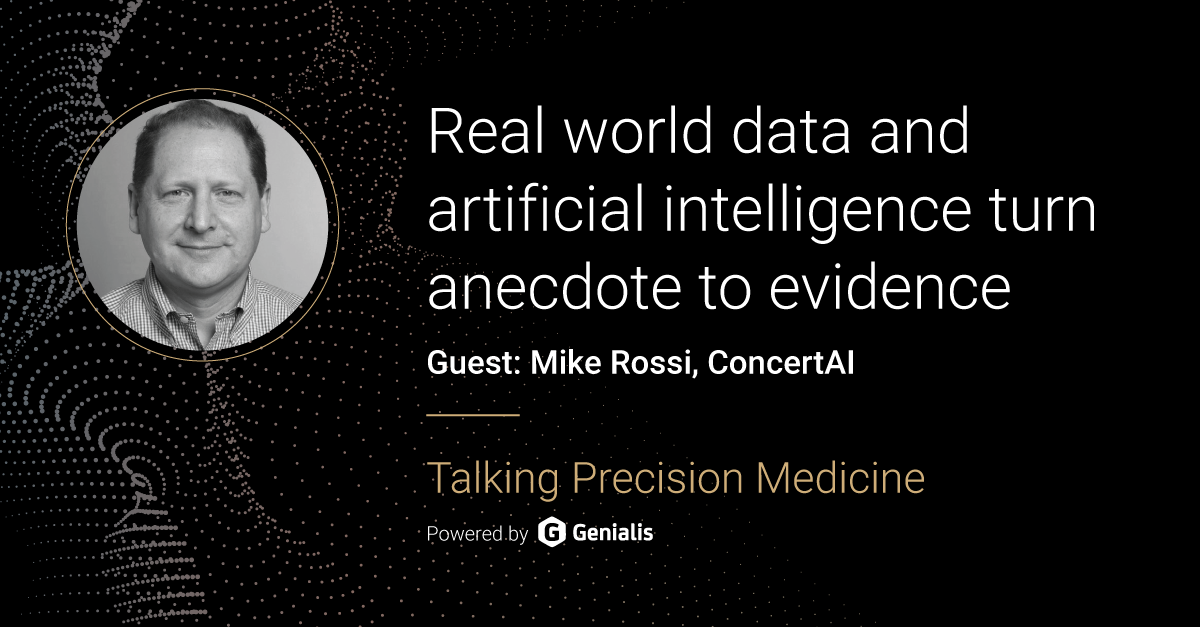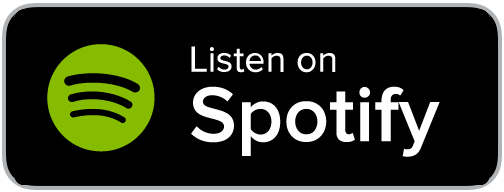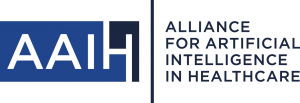Welcome to Talking Precision Medicine (TPM podcast) — the podcast in which we discuss the future of healthcare and health technology, and how advances in data and data science are fueling the next industrial revolution.
Today I’m joined by Mike Rossi, Vice President of Translational Science and Multi-modal Real-World Evidence Solutions at ConcertAI. Mike has built a career at the intersection of genomics, data science, and oncology, helping to bridge the gap between research and real-world clinical practice. We talk about what real-world data really means, how it becomes actionable evidence, and what it takes to turn the messy reality of patient care into insight that changes lives.
Come on in and have a listen.
Links:
Episode highlights:
Understanding ConcertAI’s mission
“We really try to position ourselves to be as this kind of full breadth of information from diagnosis to death of cancer patients, really trying to understand how they’re treated, adding a lot of clinical context and nuance to, to the cancer journey.”
- ConcertAI was founded about seven or eight years ago, growing out of earlier data ventures and forged through its collaboration with CancerLinQ, ASCO’s initiative to collect oncology patient data.
- Today, ConcertAI manages a data lake of roughly nine million adult cancer patients, combining multiple data sources and services. CancerLinQ is now a subsidiary, alongside the AI imaging company TeraRecon and several commercial and analytics divisions.
- Mike leads work in the real-world data space, which spans from clinical records to trial applications. ConcertAI partners with Caris Life Sciences, Guardant Health, NeoGenomics, and others, integrating different laboratory datasets to give a fuller view of the cancer spectrum.
What makes data “real-world”
- Real-world data (RWD), Mike explains, is the digital record of patient care — the electronic medical records, clinical notes, and billing claims that reflect what truly happens in healthcare systems every day. But the key to transforming this into real-world evidence (RWE) lies in cleaning, standardizing, and interpreting it.
- Structured fields capture basic facts like diagnosis codes and treatments, while unstructured text contains much of the nuance: the oncologist’s impressions, treatment rationales, and clinical notes. Combining these with billing data provides a fuller view of what patients receive, how they respond, and why.
- The complexity of the U.S. healthcare system makes this work challenging. Multiple EMR vendors and inconsistent data entry lead to fragmentation, but Mike sees that diversity as a strength: “It captures how medicine really works.”
“There’s a lot of noise in real-world data that needs to be sorted out and verified. The real elements of truth — that’s what becomes evidence.”
The role of AI
“I’m worried that people do think that technology is a shortcut. It really shouldn’t be a shortcut. It should be a way of making things more efficient so that you can get more done. If you’re trying to use it as a crutch to get a cheat ahead of things, I think that that’s where the problems lie. And I think that that’s why real world data for me is so important. It’s so important to be able to have real people, real individuals, you know, that the counter to artificial is real.”
- Mike is optimistic about AI’s potential but insists it must remain grounded in real data.
- AI systems built on synthetic datasets or incomplete data can mislead rather than enlighten. The goal, he says, is not automation for its own sake, but tools that augment scientific understanding and support better clinical decisions.
- He sees the future of data infrastructure in federated systems, networks that allow institutions to analyze information locally without physically moving it. Given the enormous scale of healthcare data, this approach improves efficiency, privacy, and collaboration.
“I think everybody inherently understands that data is valuable. It’s not valuable if it’s not accessible, it’s not valuable if it’s not doing anything to actually help understand outcomes in a disease.”
Real-world evidence and the evolving role of pharma
“Pharma has a bad rap and I understand why it has a bad rap. But until there’s a new kind of way to make drugs, I don’t know how else we get drugs to market and actually in people.”
- ConcertAI partners with several laboratories, each contributing distinct datasets that enrich understanding of cancer care. The goal isn’t to benchmark labs but to apply their combined data to specific pharma use cases — helping companies see how treatments perform in real-world settings.
- Mike acknowledges that progress in oncology is never as fast or inexpensive as anyone would like, but data-driven insight is accelerating change. Real-world evidence helps identify which patients respond to treatment, where unmet needs persist, and how new therapies can move earlier in the care pathway.
- The traditional divide between academia and pharma is outdated. Industry scientists are just as dedicated to curing disease — and often closer to achieving it. Collaboration between companies is now common, with joint trials and shared data accelerating discovery. Mike stresses that data progress requires real investment and that the field has room for many players working toward the same goal.
A career shaped by the genome
“I’ve always felt that if you can diagnose cancer better, you can treat it better.”
- Mike began his career at Roche Biomedical Labs in the early 1990s, when cytogenetics still involved photographing and cutting chromosomes by hand. Fascinated by seeing the genome in action, he later earned a PhD during the early days of the Human Genome Project, focusing on gene mapping and microscopy.
- At Roswell Park Cancer Institute, he worked with some of the first copy number and gene expression arrays, applying early multimodal methods to pediatric brain tumors and other cancers. Further training at Yale under Allen Bale deepened his expertise in medical genetics and cancer genomics.
- At Emory University’s Winship Cancer Institute, Mike helped develop early next-generation sequencing–based molecular tests and championed integrating genomic and transcriptomic data at scale.
Progress and the path ahead
- Mike is quick to counter anyone who claims progress in cancer has stalled. Across his career, he’s watched medicine change dramatically — from the early Osimertinib trials in lung cancer to life-altering therapies like Keytruda, and now to the promise of antibody–drug conjugates (ADCs) and other new mechanisms of action. These advances, he says, show how far the field has come in just a decade.
“Anybody who says to me that we haven’t done anything in cancer, I’m always happy to chew their ear off and explain all the things that we have done.”
- Looking forward, Mike doesn’t expect dramatic revolutions but continued refinement. AI won’t replace physicians, he says, but it can make their work more efficient and accurate
- He’s also hopeful that data platforms like CancerLinQ will evolve to bridge physicians and patients, turning complex information into conversations that guide care. In the coming decade, he expects more therapies once thought impossible — even cures for specific cancers — as researchers identify the right cohorts and drug combinations.
“My hope is that we continue to build tools that are physician-supportive: help the radiologist make the right diagnosis, help the pathologist make the right diagnosis, help the oncologist pick the right drug.”
- Despite today’s challenges around access, funding, and research investment, Mike remains optimistic. Scientists, he says, are resourceful, and there are always new ways forward.
“There’s not a day that goes by that I don’t realize what I don’t know and how much more there is to learn.”
This has been Talking Precision Medicine. Please subscribe and share our podcast with your colleagues, leave a comment or review, and stay tuned for the next episode. Until then you can explore our TPM podcast archive and listen to interesting guests from our past conversations.




